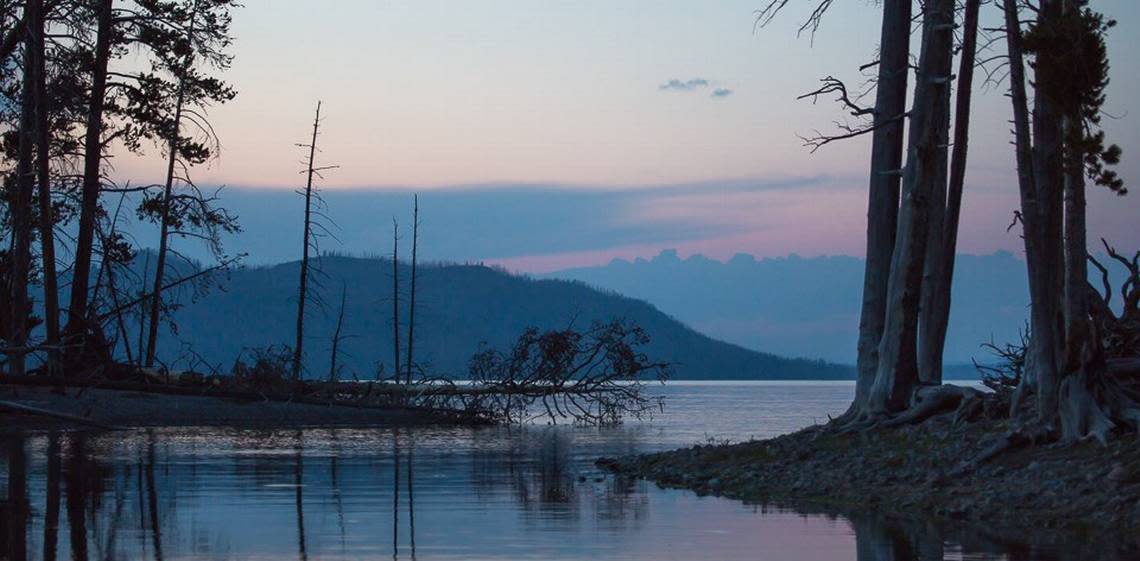Over 1,000 earthquakes rattle Yellowstone in July in ‘doozy’ of month, geologists say

- Oops!Something went wrong.Please try again later.
It was “quite a doozy” of a month for earthquakes in Yellowstone — but there’s no reason to panic, geologists said.
More than 1,008 earthquakes shook the Yellowstone region in July, U.S. Geological Survey Volcanoes said Monday. That number could still increase as experts count smaller earthquakes they may have missed.
#Yellowstone July update: “doozy” of a month for EQs (7 swarms, 1000+ EQs, largest a M3.6). Existing faults “goosed” by increased pore pressure (from snow melt) & not magma moving (no change in #deformation data). #DYK: Solitary geyser once fed a swimming pool near Old Faithful? pic.twitter.com/cgXTdGDY7T
— USGS Volcanoes (@USGSVolcanoes) August 2, 2021
The region hit that number largely in part to seven earthquake swarms, including a massive swarm that rattled the region starting July 15.
The swarm, which was centered beneath Yellowstone Lake, had more than 764 quakes. The largest was a magnitude 3.6 on July 16.
Yellowstone rattled by swarm of more than 140 earthquakes in past day, geologists say
“This may seem like a lot, and it is,” Mike Poland, scientist-in-charge at Yellowstone Volcano Observatory, said in a video. “The month was quite a doozy for earthquakes, but it’s not actually the most we’ve seen in any given month.”
Swarms are typical in Yellowstone and account for about half of the total seismic activity in the region, USGS said. Larger swarms have happened before in Yellowstone.
In 2017, more than 1,100 earthquakes shook the region in June, in part because of a swarm of more than 2,400 quakes that lasted three months, Poland said. In 1985, more than 3,000 quakes shook the area.
Some people, however, still worry earthquakes in Yellowstone are a sign that the “supervolcano” that lies beneath the park will soon erupt, which could have regional and global consequences.
“Such a giant eruption would have regional effects such as falling ash and short-term (years to decades) changes to global climate,” USGS said on its website. “Those parts of the surrounding states of Montana, Idaho, and Wyoming that are closest to Yellowstone would be affected by pyroclastic flows, while other places in the United States would be impacted by falling ash (the amount of ash would decrease with distance from the eruption site).”
The USGS doesn’t think an eruption at Yellowstone is likely for thousands of years. Even with the current swarm, the alert level at the Yellowstone Volcano Observatory is green, which is normal.
July’s earthquake swarm is nothing to worry about, geologists said. It wasn’t caused by magma moving around, Poland said.
Ground water from snow melts is getting into existing faults and causing earthquakes. If the quakes were triggered by magma moving beneath the surface, the ground would be sinking or cracking.
“We haven’t seen any significant changes in deformation that might suggest that something different was happening at Yellowstone,” Poland said.
Earthquakes in Yellowstone typically happen in swarms, according to the park. Swarms happen in many places where there is volcanic activity and occur for a number of reasons. The most common is when water gets into faults in the Earth’s crust, which is what happened in July, according to USGS.
“Some swarms are driven by slow fault slip that causes earthquakes on few sticky patches of the fault,” USGS said. “Other swarms are generated when magma-filled cracks push their way through the crust.”
Yellowstone tourist was caught on camera too close to a grizzly. She may go to jail
Fake Yellowstone tour guide urged people to break rules, park says. He’s going to jail
Flag-waving tourist who ran across Old Faithful is banned from Yellowstone, park says

